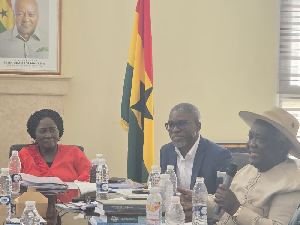The incorporeal consciousness of human rights has somewhat been transposed consciously and clumsily from one generation to another, obviously bearing the vestiges of its tempestuous past.
It must be noted that a rich body of extant human rights literature attributes the emergence of the human rights regime to the past uncontrolled human rights abuses (Waltz, 2001; Kabasakal, 2006).
In 1945, the United Nations adopted its Charter (UN 1945). The Charter stresses that the principal purpose of the United Nations is “to save succeeding generations from the scourge of war”, and “to reaffirm faith in fundamental human rights.”
One would think of human rights as universal, inalienable and indivisible, as rights shared equally by everyone regardless of sex, race, nationality and wealth. However, the opposing political traditions over the centuries have settled on conflicting visions of human rights anchored in past social struggles. Suffice it to stress that such historical legacy and contemporary contestable meanings of human rights are, despite the admirable efforts of the architects of the declaration, all reflected in the architecture and the essence of all-important human rights regime (Ishay 2004).
Rene Cassin, one of the principal drafters of the universal declaration of Human Rights, adopted by the General Assembly in 1948, subsumed the main tenets of human rights by juxtaposing them with the portico of a temple. Drawing on the battle cry of the French revolution, Cassin identified the four pillars of the declaration as: ‘dignity, liberty, equality, and brotherhood’ (Ishay 2004).
Apparently, the 27 articles of the declaration were divided among these four pillars. The pillar underpinned the roof of the portico (articles 28–30), which stipulated the conditions in which the rights of individuals could be realized within society and the state.
The first pillar covered in the first two articles of the declaration stands for human dignity shared by all individuals regardless of their religion, creed, ethnicity, religion, or sex; the second, specified in articles 3–19 of the declaration, invokes the first generation of civil liberties and other liberal rights fought for during the Enlightenment; the third, detailed in articles 20–26, addresses the second generation of rights, i.e. those related to political, social and economic equity and championed during the industrial revolution; the fourth (articles 27–28) focuses on the third generation of rights associated with communal and national solidarity, as advocated during the late 19th century and early 20th century and throughout the postcolonial era (Ishay 2004).
Based on the preceding acceptations, we can draw an adverse inference that human rights are the basic rights and freedoms that belong to every person in the world, from birth until death.
It is also worth stressing that human rights apply regardless of where you are from, what you believe or how you choose to live your life.
More significantly, human rights can never be taken away, although they can sometimes be restricted – for example, if a person breaks the law, or in the interests of national security.
Interestingly, however, basic human rights are based on values like dignity, fairness, equality, respect and independence. But then again, human rights are not just abstract concepts – they are defined and protected by national and international laws.
Given that the Universal Declaration of Human Rights acknowledges that all human beings are born free and equal in dignity and rights, one would have expected universal coverage of human rights. However, it does not appear to be the case. The human rights of some members of the human family are non-existent in most countries (UN 2011).
Interestingly, Mertus (2007) asserts that before 1993, the idea of "sexual rights” was non-existent in international documents. Mertus postulates that apart from the provisions prohibiting discrimination on the grounds of sex, the concepts of sexuality and sex practices were utterly absent. Mertus stresses that as a result of strenuous endeavours of a vociferous and well organized coalition of women's rights advocates, phraseologies of sexuality were included in the 1993 Vienna Declaration and Programme of Action.
Mertus, however, observes that despite the inclusion of sexuality in the 1993 Vienna Declaration and the Programme of Action, the idea of a right to sexuality was incorporated only in a negative sense, as in recognition of women's right to be free from sexual violence.
Mertus stresses further that, it was not until the International Conference on Production and Development in 1994 that sexuality would "begin to sneak into international documents as something positive rather than always violent, abusive, or sanctified and hidden by heterosexual marriage and childbearing."
In 2006, a committee of human rights experts came up with the Yogyakarta Principles, which stress on the application of International Human Rights Law in relation to Sexual Orientation and Gender Identity (Yogyakarta 2006).
Ironically, in 2006, joint statements were delivered by Norway on behalf of 54 States (UN 2011). And, in 2011, joint statements were delivered by Colombia on behalf of eighty five States (UN 2012).
The breakthrough however came in June 2011, when South Africa delivered a statement, resulting in HRC/RES/17/19, adopted by a recorded vote of twenty three to nineteen, with three abstentions (UN 2011).
Interestingly, the statement delivered by South Africa resulted in first United Nations resolution on sexual orientation and gender identity. The resolution sought to register “grave concern” at violence and discrimination against individuals based on their sexual orientation and gender identity.
More importantly, the adoption of the resolution prepared the grounds for the first official United Nations report on the issue produced by the Office of the High Commissioner for Human Rights. The report’s findings formed the basis of panel discussion that took place at the Council in March 2012, the first time a United Nations intergovernmental body had held a formal debate on the subject (UN 2012).
Thus, it is not surprising that in recent years, many countries have made a determined effort to fortify human rights protection for lesbian, gay, bisexual and transgender people, according to the United Nations 2012 report.
The report stresses that a cornucopia of new laws have been adopted – including laws banning discrimination, penalizing homophobic hate crimes, granting recognition of same-sex relationships, and making it easier for transgender people to secure official documents that represent their preferred gender (UN 2012).
“drawing from Cassin’s invocation of the French revolutionary motto, ‘liberty, equality, and fraternity’ one can easily show that calls for tolerance, for social and economic entitlements and brotherhood can be found in most ancient religions and secular traditions” (Ishay 2004).
Based on the above, I would like to submit that since homosexuals have inalienable rights under the international law, the international community must, as a matter of urgency, show fairness to polygamists across the world by acknowledging and documenting plural marriage in the international law.
Opinions of Friday, 20 April 2018
Columnist: K. Badu















